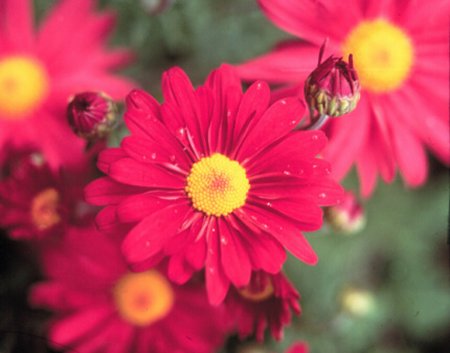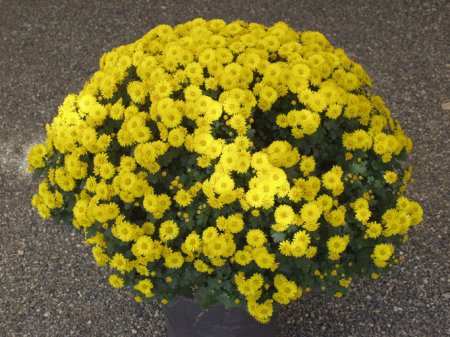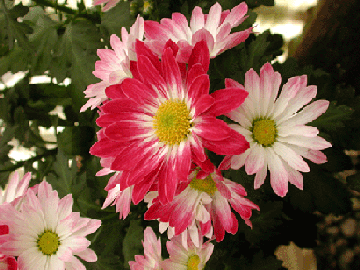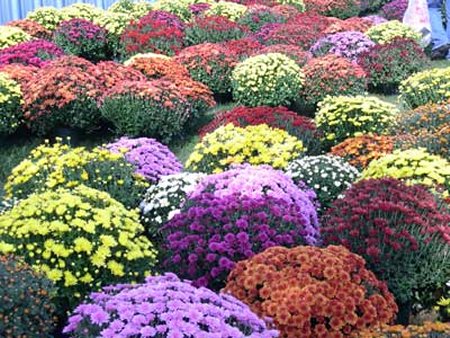
2005 Year in Review
Back to Page two: Other Listing | Back to Year in Review Index
Planting Mums |
|
Though mums are more associated with the fall, May is the time to plant, divide or move mums, said James Schuster, University of Illinois Extension horticulture educator based in Cook County. "Some gardeners get away with planting in the fall but many others find that their mums fail to survive the following winter," he said. "Mums need time to establish themselves in the garden. Planting in the fall does not give most of the mums enough time." Better survival can be ensured by planting in May, he noted, when temperatures are usually not too hot and there is adequate rainfall. Even indoor mums that are not winter hardy when planted in May often re-bloom in the fall before being killed by the cold. "Choose a sunny, well-drained location for your mums," Schuster recommended. "Choose a location where you can use the plants as background for other shorter flowers. This allows the summer flowers to stand out better and still allow the mums to show off their majestic blooms later in the summer and fall." In order to allow the gardener to see flower color, shape and size better, some garden centers force mums to bloom in the spring. This helps to improve sales and encourage gardeners to plant the mums in the spring. “However, if the mums are bought in bloom, the flowers should be cut off when planted,” he said. “Whether you are planting a mum or some annual, you should remove flower buds and open blooms at the time of planting so that the flowers transplant better for a higher survival rate.” If the mum or other flower comes in a degradable pot such as peat, consider cutting slices in the sides of the pot to minimize trapping roots inside the pot. Many gardeners see roots growing through the peat and are afraid to cut or remove the peat. “Those exposed roots are going to die as soon as the peat dries out,” said Schuster. “Plant survival goes up when the peat is either removed or sliced, as roots are not killed or choked off every time the peat pot dries out through the rest of the summer. “Plants removed from non-biodegradable pots also need their roots cut or forcibly spread in order to get the roots to stop circling and to spread out for better long-term survival.” by Editor, theCity1.com |
|
Copyright © 2005 TheCity1.com.
All rights reserved




